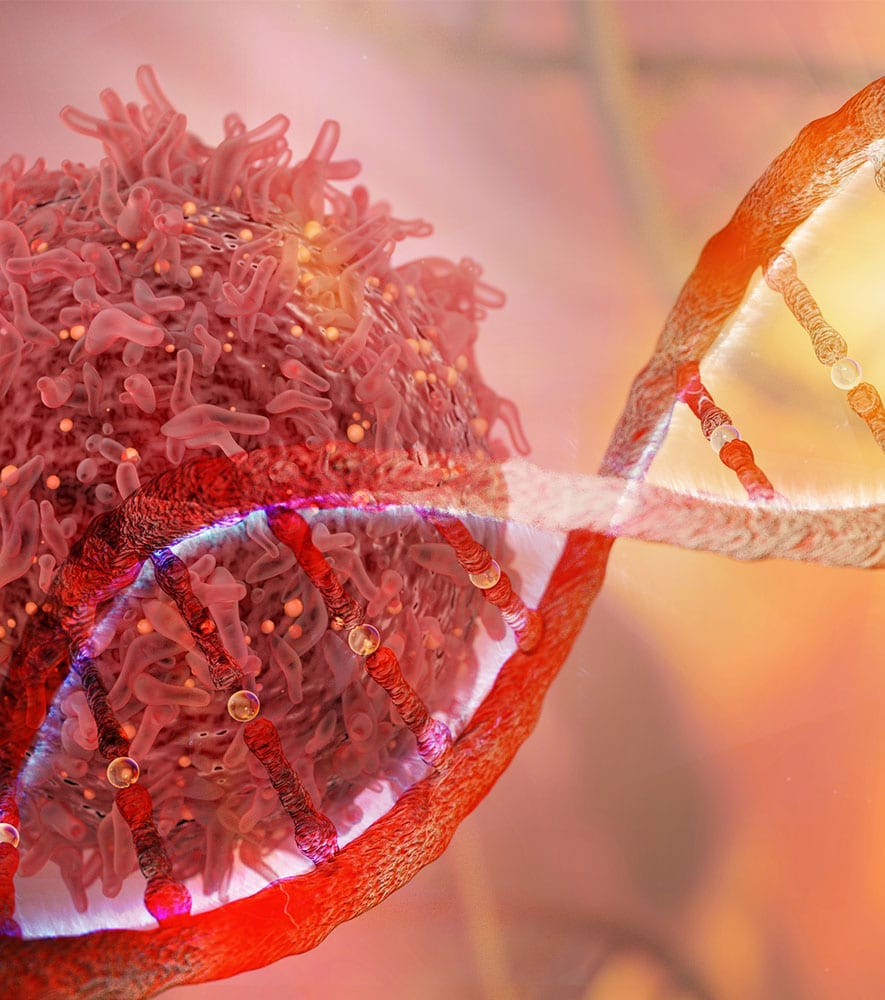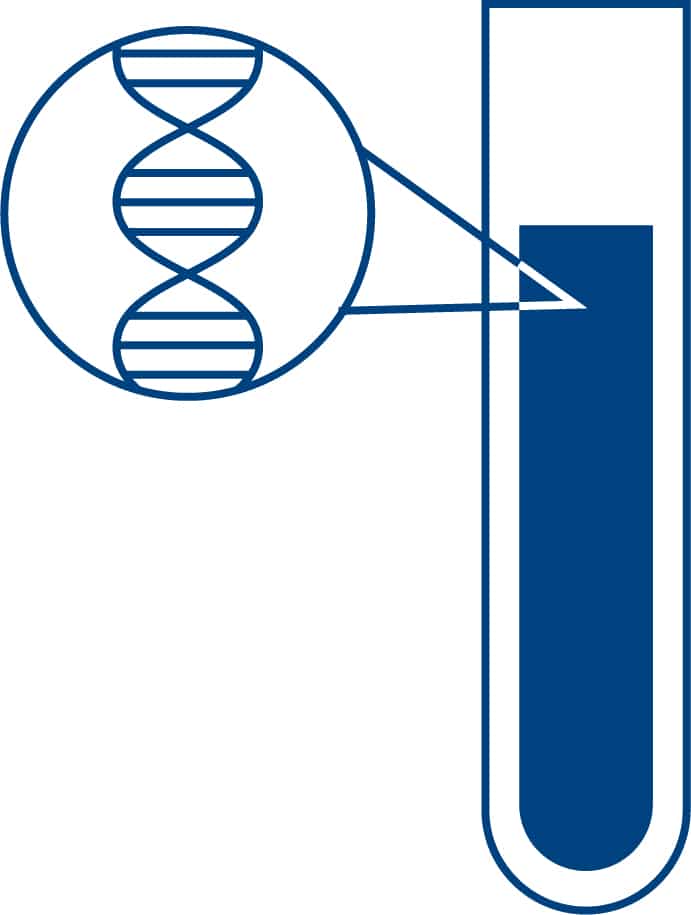Feature Article
Cell-free DNA for non-invasive cancer management and early detection

Precision treatment for cancer relies on understanding the nature of the tumor cells, including analyzing their DNA to identify alterations that help drive cancer cell growth. Often, the analysis is performed on tumor tissue from a biopsy or surgery. However, sometimes tissue is limited or unavailable. Emerging roles for cell-free DNA analysis can overcome these challenges and much more.
Cell-free DNA (cfDNA) are short fragments of DNA released in the blood by cells of all types, including tumor cells. The diagnostic applications of cfDNA analysis have gained much interest over the years and have shown promise as a surrogate for, or even as a complement to, tumor biopsies. From a simple blood draw, cfDNA released into the bloodstream by cancer cells, most commonly known as circulating tumor DNA (ctDNA), can be isolated from the blood and analyzed. This analysis can be used to identify alterations present in the cancer, monitor response to treatment, and determine whether there has been progression or recurrence of disease. The analysis can also be used as a screening tool for early cancer detection.
Comprehensive Genomic Analysis
In one type of cfDNA test, tumor-specific genes in ctDNA are sequenced to determine whether there are any mutations present. The results can point to specific treatment options and clinical trials that best match the ctDNA genomic profile. In addition, the amount of ctDNA can be quantified, which can provide insight into whether treatment is working (i.e., the amount of ctDNA decreases) or not. And because only a blood sample is required, ctDNA sequencing can be performed over time to monitor response to treatment or for changes in mutations that may occur.
A Personalized Surveillance Strategy

A second type of ctDNA test enables the detection of “Minimal Residual Disease” (MRD), or the presence of a small amount of tumor DNA that indicates that cancer is still present. In MRD testing, the DNA sequence in the tumor tissue is compared to that in normal cells from the blood to identify a unique set of mutations specific to the patient’s tumor. Next, these mutations are used to create a personalized MRD test that detects the presence or absence of ctDNA from any future blood sample. The results from personalized MRD tests can indicate whether there has been a recurrence of a cancer previously in remission. In those with known cancer, it can help determine whether there has been a treatment response or disease progression over time.
Early Detection and Tissue of Origin Determination
A third type of cfDNA analysis has been developed as a cancer screening approach for healthy, asymptomatic individuals. cfDNA screening increases the chances of detecting certain cancers early, when they are small, have not spread, are easier to treat, and are more likely to be curable. With continued advancement in understanding how cfDNA changes as healthy cells transition to malignant cells, scientists can now look at changes in what is referred to as “methylation patterns” in cfDNA and determine whether there is a high likelihood of cancer. If there is, the methylation patterns can also indicate which tissue the cancer is coming from to help guide the appropriate follow-up.
Guiding Your Care
Private Health continues to use the latest cutting-edge biotechnology to provide our clients precision medicine and personalized care. As always, we continually monitor the rapidly changing landscape of applications for cfDNA and are early adopters of exciting new tests that enable our clients to make informed decisions when faced with cancer.
